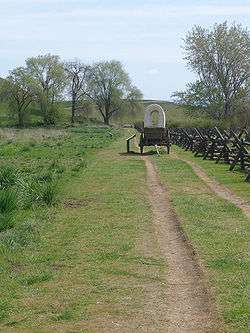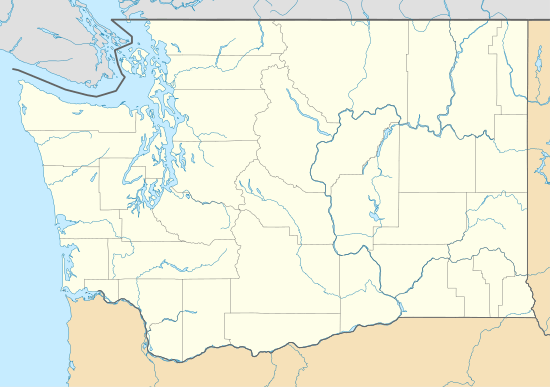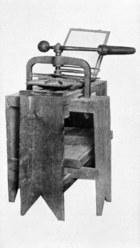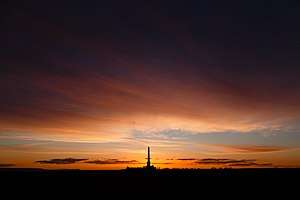Whitman Mission National Historic Site
Whitman Mission National Historic Site is a United States National Historic Site located just west of Walla Walla, Washington, at the site of the former Whitman Mission at Waiilatpu. On November 29, 1847, Dr. Marcus Whitman, his wife Narcissa Whitman, and 11 others were slain by Native Americans of the Cayuse. The site commemorates the Whitmans, their role in establishing the Oregon Trail, and the challenges encountered when two cultures meet.
Whitman Mission National Historic Site | |
 The Oregon Trail at Whitman Mission | |
 | |
| Location | Walla Walla County, Washington, United States |
|---|---|
| Nearest city | Walla Walla, Washington |
| Coordinates | 46°2′24″N 118°27′41″W |
| Built | 1837 |
| Website | Whitman Mission National Historic Site |
| NRHP reference No. | 66000749 [1] |
| Added to NRHP | October 15, 1966 |
History
In 1836, a small group of Methodist missionaries traveled with the annual fur trapper's caravan into "Oregon Country". Among the group, Narcissa Whitman and Eliza Hart Spalding became the first white women to travel across the continent.
Marcus Whitman and his wife Narcissa Whitman established the Whitman Mission at Waiilatpu, near the Walla Walla River.[2] The mission was in the Cayuse territory. The Cayuse were a warring tribe and were suspicious of the Whitmans. Relations between the Whitmans and the Cayuse improved greatly when Marcus Whitman attempted to learn the Cayuse language.[2] While Dr. Whitman had learned the Cayuse language he was insistent that the Cayuse should learn the white man's way of living by becoming farmers. Differences in culture led to growing tensions between the native Cayuse people and the Whitmans.

The Mission became an important stop along the Oregon Trail from 1843-1847, and passing immigrants added to the tension. With the influx of white settlers the Cayuse became suspicious of the Whitmans again, fearing that the white man was coming to take the land.
A measles outbreak in November 1847 killed half the local Cayuse. The measles also broke out in the Mission but more white settlers survived. Some of the Cayuse blamed the devastation of their tribe on Dr. Whitman and Mrs. Whitman. They were killed along with eleven others; forty-seven other mission residents were taken hostage. The deaths of the Whitmans shocked the country, prompting Congress to make Oregon a U.S. territory, and precipitated the Cayuse War.
In more recent times, the site has been excavated for important artifacts, and then reburied. A memorial obelisk, erected fifty years after the event, stands on a nearby hill.
The historic site was established in 1936 as Whitman National Monument and was redesignated a National Historic Site on January 1, 1963.

References
- "National Register Information System". National Register of Historic Places. National Park Service. April 15, 2008.
- "The Whitman Mission". Historic Oregon City. Retrieved 2013-01-20.
- Brosnan, Cornelius J. (Cornelius James) (May 9, 1918). "History of the state of Idaho". New York, Chicago [etc.] C. Scribner's sons. Retrieved May 9, 2019 – via Internet Archive.

